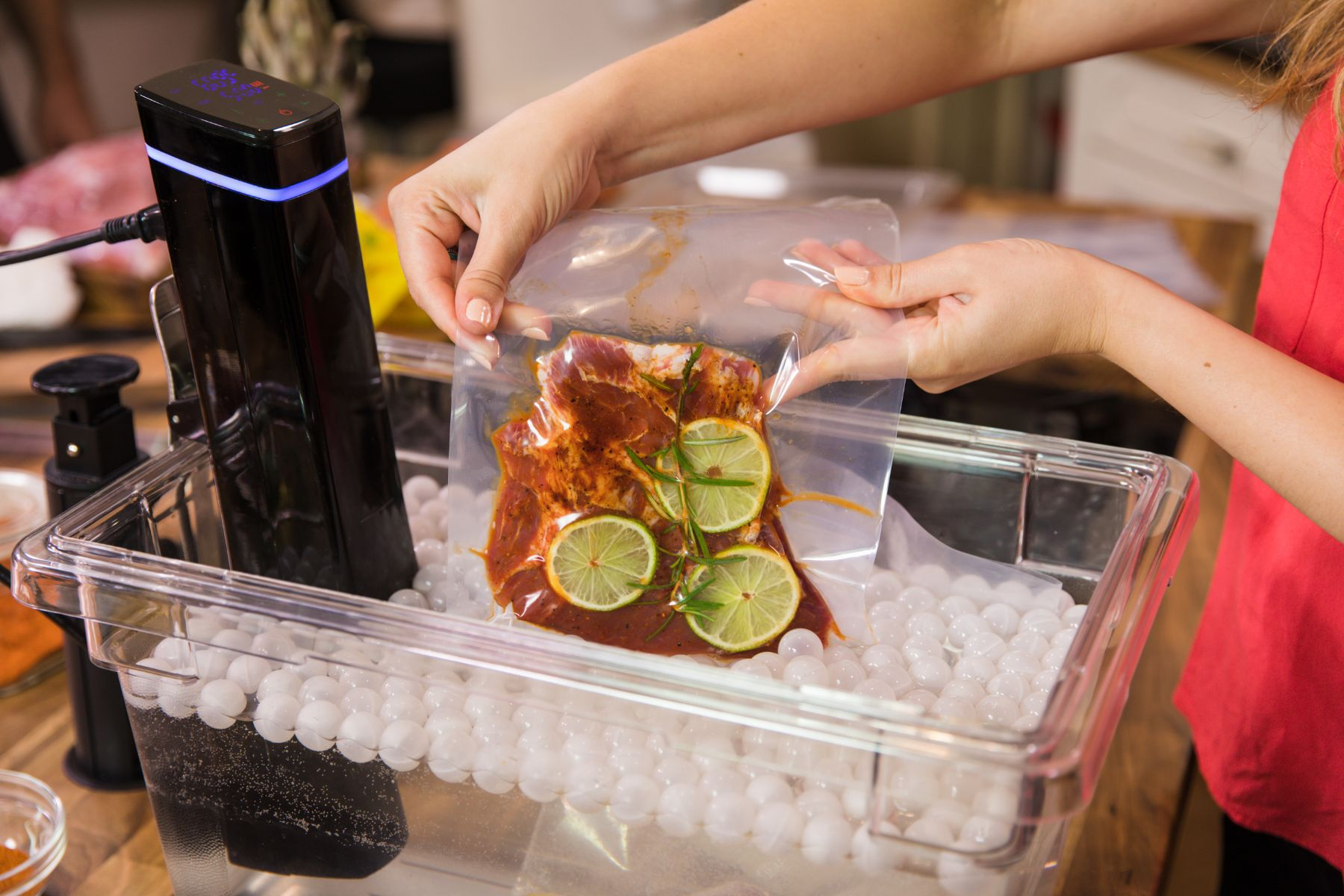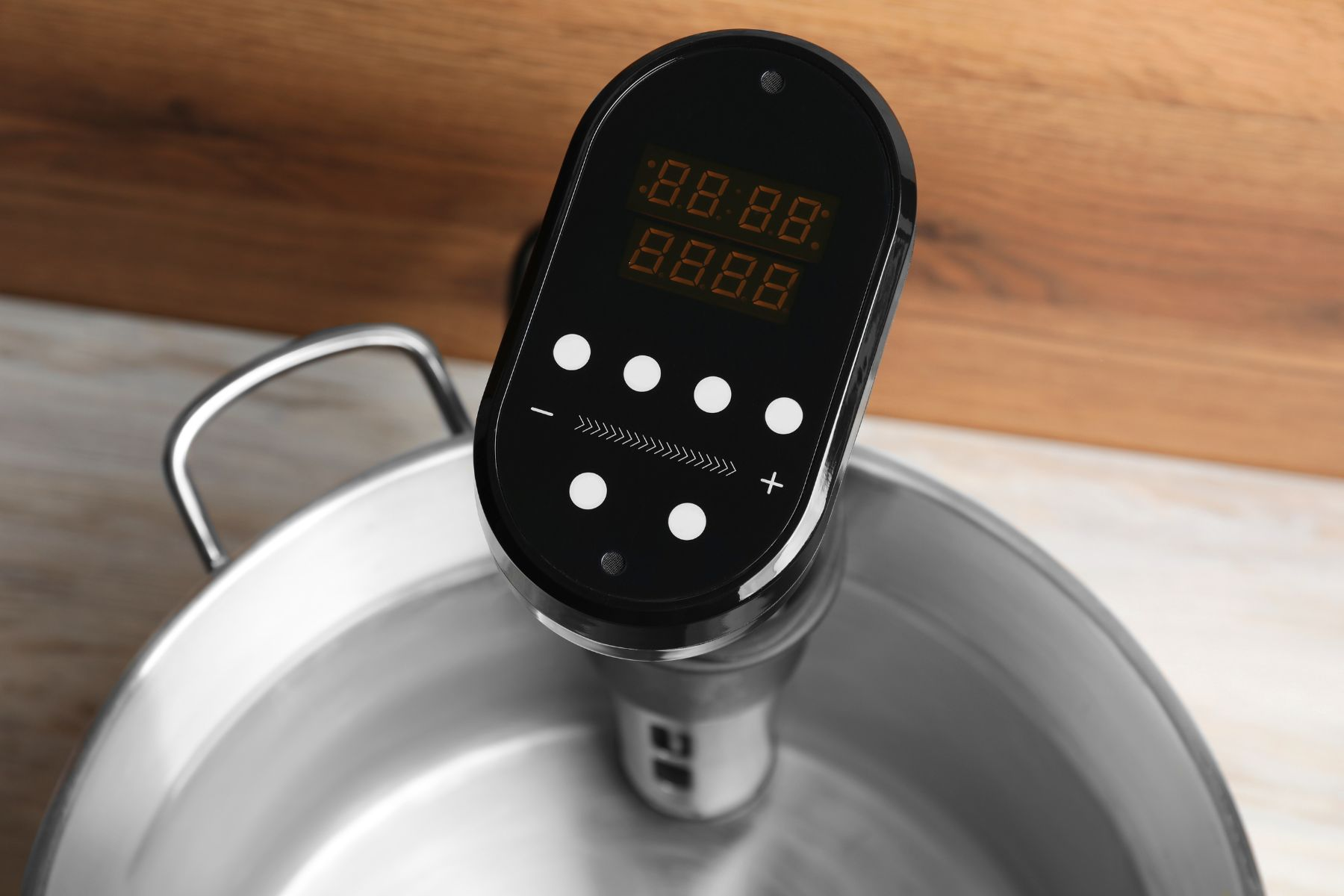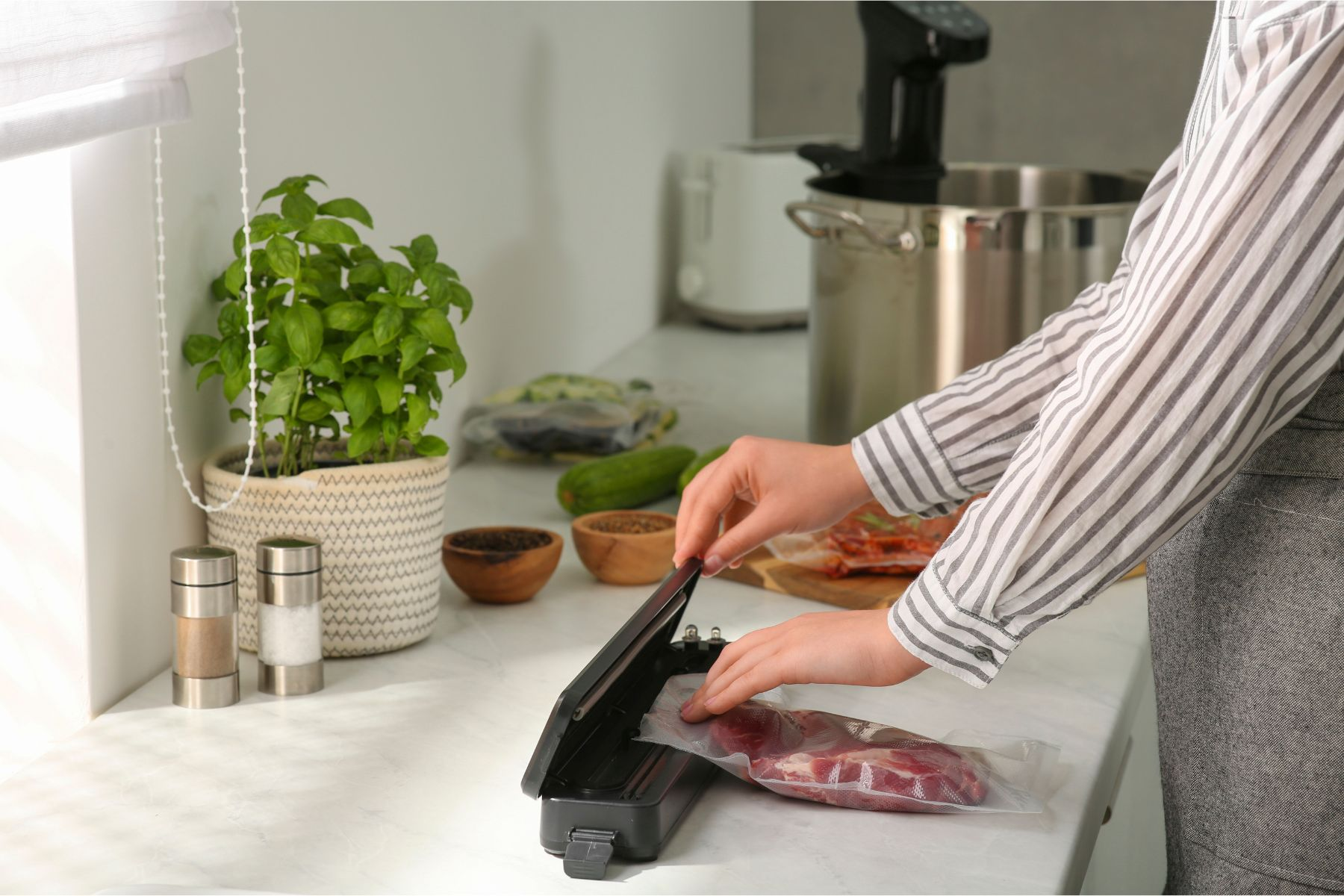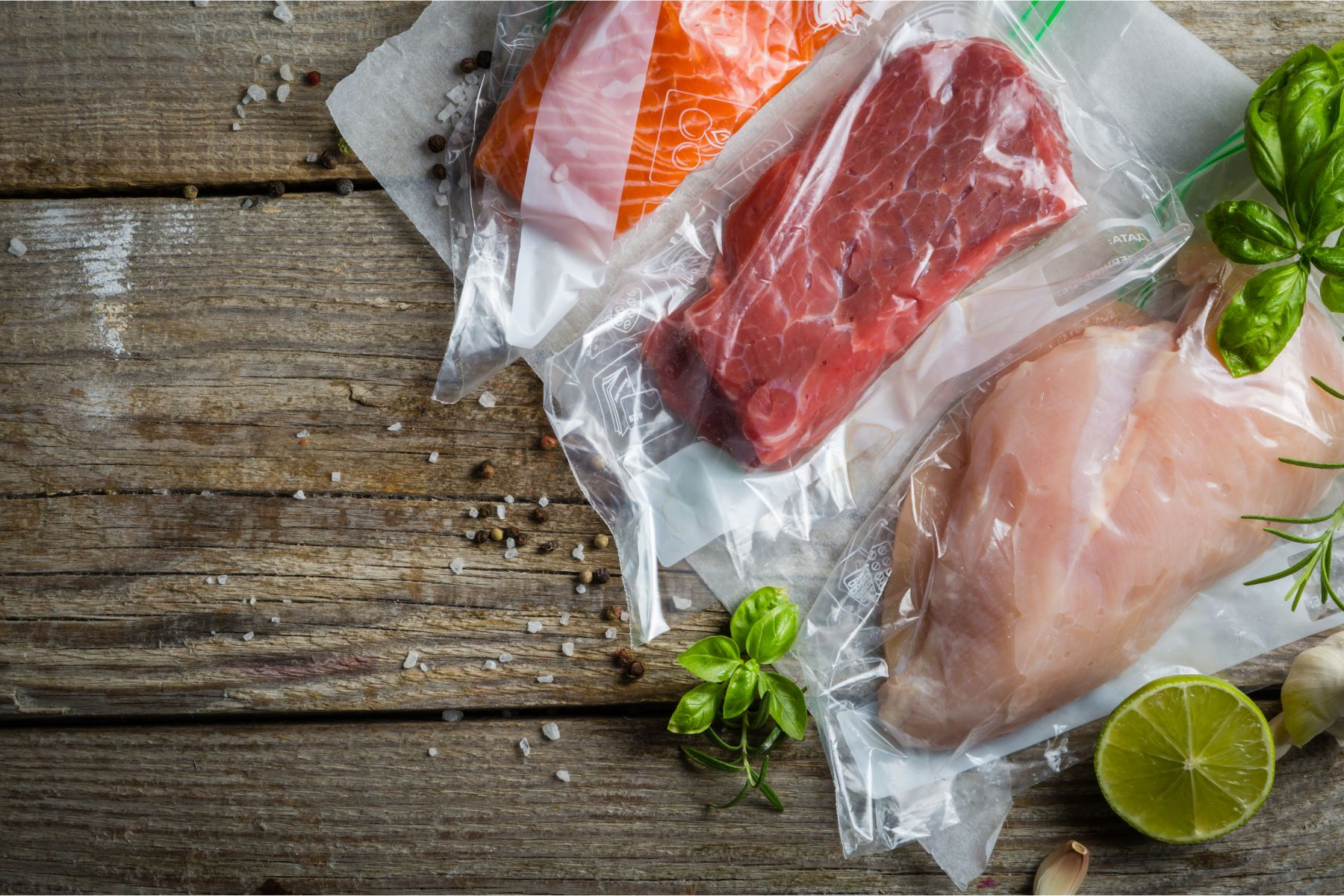Why Chefs Love Sous Vide Cooking: Should You Try It?
The world of culinary arts is ever-evolving, with techniques and methods constantly emerging to redefine our cooking experiences. Sous vide cooking has taken the culinary world by storm, promising perfectly cooked dishes with minimal effort. If you've been intrigued by this innovative cooking method, you're in the right place. In this comprehensive guide, we'll delve into everything you need to know about sous vide cooking, from understanding the basics to exploring essential tools and mastering the technique.
What is Sous Vide?

Defining Sous Vide Cooking
Sous vide, pronounced "soo veed," is a cooking method that involves immersing vacuum-sealed food in a precisely controlled water bath. This technique delivers consistent, perfectly cooked results with precise temperature control, revolutionizing the way we approach cooking.
A Brief History of Sous Vide Cooking
The sous vide method traces its roots to the 1970s when French chefs pioneered this innovative approach to food preparation. Originally an industrial cooking technique, sous vide has since found its way into home kitchens, transforming the way we cook meat, seafood, vegetables, and even desserts.
Sous Vide Equipment

Essential Sous Vide Tools
-
An Immersion Circulator
-
A compact device that clips onto a pot or container, ensuring water circulation and even cooking.
-
-
Breville Joule Turbo Sous Vide
-
A powerful and compact sous vide tool known for its efficiency in delivering restaurant-quality results.
-
-
Anova Culinary Sous Vide Precision Cooker
-
A reliable precision cooker that brings sous vide cooking within reach for home cooks.
-
-
Anova Culinary Precision Cooker Pro
-
A professional-grade sous vide tool offering enhanced power and durability.
-
-
Instant Accu Slim Sous Vide Immersion Circulator
-
A sleek and user-friendly immersion circulator designed for precise temperature control.
-
Other Must-Have Gear
-
Cambro Containers
-
Sturdy containers for creating the perfect sous vide water bath.
-
-
Lodge 12-Inch Pre-Seasoned Cast Iron Skillet
-
An essential skillet for finishing sous vide-cooked meats with a perfect sear.
-
-
Nesco VS-12 Deluxe Vacuum Sealer
-
An efficient vacuum sealer for airtight food packaging.
-
-
DSTELIN Binder Clips 100 Count
-
Handy clips to keep sous vide bags securely submerged during cooking.
-
How to Sous Vide

Sous Vide Cooking Tutorial
Getting Started with Sous Vide
Sous vide cooking may seem intimidating at first, but it's surprisingly straightforward. Here's a step-by-step guide to help you get started:
-
Preheat Your Water Bath: Set your sous vide machine to the desired cooking temperature.
-
Prepare the Ingredients: Season your food and place it in a vacuum-sealed bag.
-
Seal the Bag: Use a vacuum sealer or the water displacement method to ensure an airtight seal.
-
Cook with Precision: Submerge the sealed bag in the preheated water bath, allowing the sous vide machine to work its magic.
-
Finish with a Sear: For that perfect crust, finish your sous vide-cooked meat in a hot skillet or with a culinary torch.
What Can You Sous Vide?

Sous vide isn't limited to specific types of food. The precise temperature control makes it suitable for various ingredients, including:
-
Meat
-
Seafood
-
Vegetables
-
Desserts
-
Eggs
Sous Vide Benefits
Consistency
One of the primary reasons chefs adore sous vide cooking is the unparalleled consistency it brings to the kitchen. With the ability to maintain a constant temperature, your food cooks evenly from edge to edge.
Taste
Sous vide enhances the natural flavors of ingredients. The sealed environment ensures that your food cooks in its juices, resulting in a richer and more intense taste experience.
Waste Reduction
Traditional cooking methods often lead to moisture and flavor loss. Sous vide minimizes these losses, reducing waste and maximizing the yield of your ingredients.
Flexibility
Sous vide cooking allows for flexibility in your kitchen routine. Prepare ingredients in advance, and when it's time to serve, a quick sear or finish in a hot skillet is all that's needed.
Sous Vide Cooking Times

Cooking Chicken Using Sous Vide
Perfectly cooked chicken breasts are achievable with sous vide. Set your machine to 150°F (65.5°C) for 1 to 4 hours, ensuring a juicy and tender result.
Cooking Fish Using Sous Vide
Fish lovers can rejoice as sous vide ensures a flaky and moist texture. Cook your favorite fish fillet at 130°F (54.4°C) for 30 minutes to 1 hour.
Cooking Beef Using Sous Vide
For a medium-rare steak, set your sous vide machine to 130°F (54.4°C) and let it cook for 1 to 4 hours.
Cooking Pork Using Sous Vide
Achieve succulent pork chops by cooking them at 140°F (60°C) for 1 to 4 hours.
Cooking Fruits and Vegetables Using Sous Vide
Sous vide isn't reserved for meats; experiment with fruits and vegetables at various temperatures to unlock new flavors and textures.
Cooking Eggs Using Sous Vide
Elevate your breakfast with sous vide-cooked eggs. Set the machine to 167°F (75°C) for 12 to 15 minutes for perfect results.
Sous Vide Recipes to Try First

Delicious Sous Vide Creations
Sous Vide Steaks With Edge-to-Edge Perfection
Sous vide steak ensures consistent doneness from the outer edges to the center. Follow these steps for steak perfection:
-
Season your steak with salt, pepper, and your favorite herbs.
-
Vacuum-seal the steak in a bag.
-
Cook at 130°F (54.4°C) for 1 to 4 hours.
-
Finish with a quick sear in a hot skillet for a delightful crust.
The Tenderest Chicken Breasts You've Ever Tasted
Sous vide guarantees tender and moist chicken breasts every time. Try this recipe:
-
Season the chicken with your preferred spices.
-
Vacuum-seal and cook at 150°F (65.5°C) for 1 to 4 hours.
-
Finish with a golden sear for a crispy exterior.
Eggs Cooked Eggs-actly the Way You Want Them
Experiment with sous vide to achieve the ideal egg texture:
-
Set the machine to 167°F (75°C) for 12 to 15 minutes.
-
Crack open perfectly cooked eggs with a runny yolk and firm whites.
The World's Most Carrot-y Carrots
Sous vide is not just for proteins. Elevate your vegetable game:
-
Season and vacuum-seal fresh carrots.
-
Cook at 183°F (83.9°C) for 45 minutes to 1 hour.
-
Experience carrots bursting with flavor.
Extra-Juicy Double-Cut Pork Chops
For succulent pork chops that melt in your mouth:
-
Season and vacuum-seal pork chops.
-
Cook at 140°F (60°C) for 1 to 4 hours.
-
Sear for a delightful crust.
Smoky Sous Vide Pulled Pork Shoulder
Sous vide isn't limited to precision cooking; it's a game-changer for slow-cooked favorites:
-
Season and vacuum-seal pork shoulder.
-
Cook at 165°F (73.9°C) for 18 to 24 hours.
-
Enjoy the smoky, tender result.
Perfectly Cooked, Plump Shrimp
Sous vide brings out the best in seafood:
-
Season and vacuum-seal shrimp.
-
Cook at 135°F (57.2°C) for 15 to 30 minutes.
-
Achieve perfectly cooked, plump shrimp.
The Best Lobster You've Ever Tasted
Impress your guests with sous vide lobster:
-
Season lobster tails and vacuum-seal.
-
Cook at 140°F (60°C) for 30 to 45 minutes.
-
Finish with a quick sear for an exceptional dining experience.
Tips and Tricks
Mastering the Sous Vide Technique
No Vacuum Sealer? Use Water Displacement to Seal Your Food in Zipper-Top Bags
If you don't have a vacuum sealer, use the water displacement method to remove air from zipper-top bags. Submerge the bag in water, allowing the pressure to push out the air before sealing.
How to Seal Foods Air-Free Without a Vacuum Sealer
For an air-free seal without a vacuum sealer, use the water displacement method or invest in reusable silicone bags for an eco-friendly option.
Keep Your Sous Vide Bag Submerged With a Binder Clip
Ensure your sous vide bag stays submerged during cooking by attaching a binder clip to the side of your container.
Add Ping-Pong Balls to Your Sous Vide Water Bath
To reduce heat loss and evaporation, cover your sous vide water bath with ping-pong balls. This simple trick helps maintain a stable cooking temperature.
Why You Should Add Ping-Pong Balls to Your Sous Vide Bath
Ping-pong balls create an insulating layer, preventing heat loss and saving energy during long sous vide cooking sessions.
Common Sous Vide Questions Answered
What are the downsides to cooking sous vide? Sous vide is not without its challenges. While it excels in precision, it may lack the traditional Maillard reaction, requiring additional steps for a perfect crust.
Can sous vide meats get a good crust? Yes, but a post-sous vide sear in a hot skillet or with a torch is essential to achieve the desired crust.
When should I season my meat? Season meat before vacuum-sealing to infuse flavors during the cooking process.
Time ranges in sous vide recipes seem really broad. What happens if I leave food cooking for longer than the maximum time? While sous vide provides flexibility, exceeding maximum cook times can affect texture and quality.
Should I put olive oil or butter in the bag? Yes, adding fats enhances flavor and ensures even seasoning.
Can I add fresh aromatics to the sous vide bag? Absolutely, fresh herbs and aromatics infuse unique flavors into your sous vide dishes.
Can I add a spice rub to my bag? Yes, a spice rub adds depth to the flavor profile, especially for meats.
Is it dangerous to cook with sous vide? No, when following proper safety guidelines, sous vide is a safe cooking method.
Should I pre-sear my meat? Pre-searing enhances flavor but is not mandatory. Experiment to find your preferred method.
What about deep-frying instead of searing after cooking sous vide? Deep-frying post-sous vide can achieve a crispy exterior but requires careful timing.
Can I use a torch to finish a steak or chop? Yes, a culinary torch is an excellent tool for finishing sous vide-cooked meats.
What's the best torch for searing meat? Look for a high-quality kitchen torch with adjustable flame settings for precise control.
Will food acquire any off aromas when finished with a torch? Proper torching techniques eliminate off aromas, ensuring a delightful dining experience.
Can I chill and reheat my food after cooking it sous vide if I haven't opened the bag? Chilling and reheating sealed sous vide bags is safe, preserving the dish's quality.
Can I cook bagged food straight from the freezer? Yes, sous vide allows for convenient cooking from frozen, extending the versatility of this method.
Does sous vide meat need to rest? Resting sous vide-cooked meat is optional, as the consistent temperature ensures even distribution of juices.
Is Sous Vide Safe?
Addressing Concerns
Is It Safe to Cook in Plastic?
Sous vide often involves cooking in plastic bags, but food-grade plastics are safe for sous vide use. Ensure the bags are labeled as suitable for cooking.
Safety Measures in Sous Vide Cooking
Follow basic food safety guidelines, such as using fresh ingredients, sealing bags properly, and maintaining the recommended cooking temperatures.
My Sous Vide Experience
Personal Insights
Embrace the Learning Curve
While sous vide might seem challenging initially, embrace the learning curve. Experiment with different temperatures and cooking times to discover your preferred results.
My "Oh, Wow!" Sous Vide Moment
The sous vide method often surprises with its ability to transform ordinary ingredients into extraordinary culinary experiences. Share your own "Oh, Wow!" moments with fellow cooking enthusiasts.
Why I Think Sous Vide Can Be a Home Cook's BFF
Sous vide offers home cooks the opportunity to elevate their culinary skills. Its precision, consistency, and versatility make it a valuable ally in the kitchen.
Conclusion
Final Thoughts on Sous Vide
In this culinary journey through sous vide cooking, we've explored the technique's origins, essential equipment, and practical tips for achieving perfection in your kitchen. Whether you're a seasoned chef or a home cook eager to try something new, sous vide cooking opens the door to a world of flavorful possibilities. Embrace the sous vide revolution and savor the delights of perfectly cooked meals, all thanks to the magic of precision temperature control.

